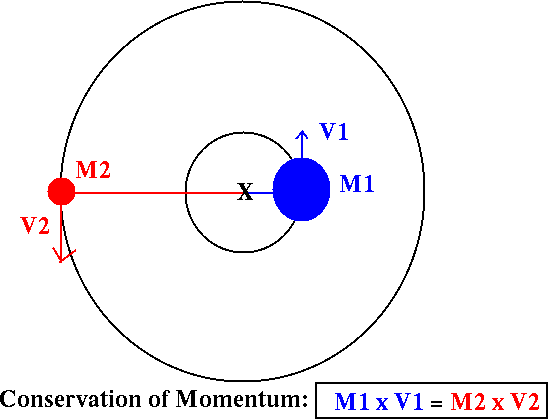
Question 1: What kind of stars would we look at?
Question 2: How would we see them?
Not by direct detection (why?)
How about indirect detection - the motion of the star induced by the planet.
Remember orbits:

Now if M2 << M1, where is the center of mass?
So we look for a "wobbling star" -- a star with a line-of-sight velocity that changes periodically like this:

How would we measure this?
One problem: inclination.
The orbital plane of the star/planet will typically be inclined to our
line of sight, so that we don't see all the radial velocity, V. We actually
measure Vsin(i).
We can also get the mass of
the orbiting planet this way. How? Kepler's
3rd law:

So how big is this effect, this wobble?
For Jupiter going around the sun, Vsun ~ 12 m/s (like a sprinter!)Enough theory -- bring on the data!
For the Earth going around the sun, Vsun ~ 10 cm/s (<-- tiny!)Current accuracy of velocity data is ~ 3 m/s.
Can we detect Earths?
Can we detect Jupiters?
Can we ever detect Earths?